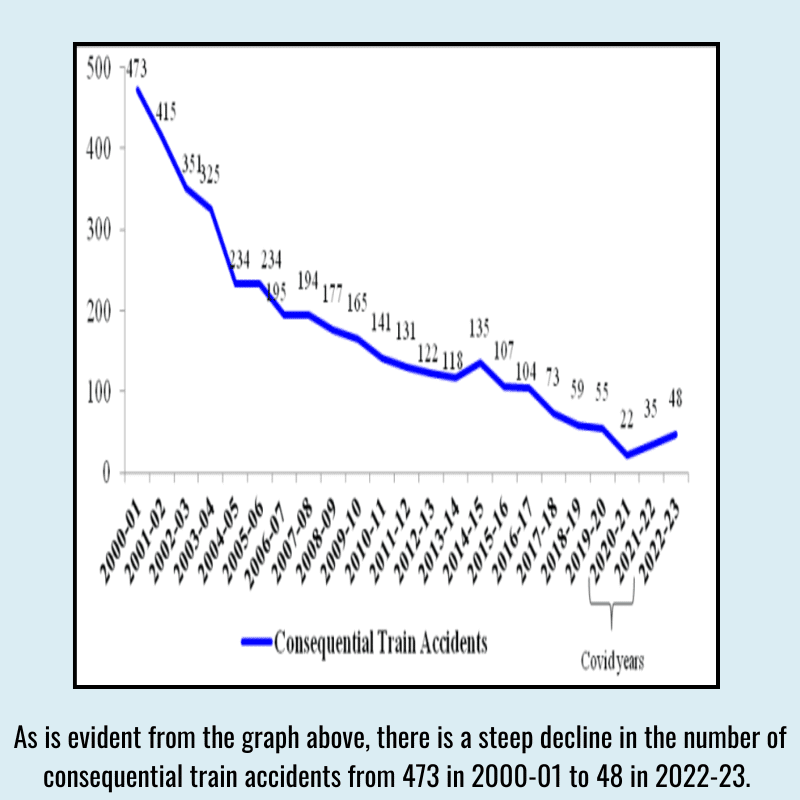

Railway safety in India has been in question time and again in the wake of recent accidents. Even though Indian Railways accords the highest priority to safety in train operations, the critical shortcomings of the system are to be looked into. Read here to learn more.
Indian railways have taken a series of safety measures over the years which have improved the safety of train operations.
The average number of consequential train accidents during the period, 2004-14 was 171 per annum, while the average number of consequential train accidents during the period, 2014-23 declined to 71 per annum.
During the period from 2014-15 to 2022-23, consequential train accidents have reduced from 135 in 2014-15 to 48 in 2022-23.
Table of Contents
Railway safety is a critical aspect of the operations of Indian Railways, one of the largest rail networks in the world. Ensuring the safety of passengers, workers, and the infrastructure is a multifaceted challenge that involves addressing various factors such as accidents, infrastructure maintenance, technology, and human resources.
Accident Prevention and Management
👉 Which year are YOU targeting for success in the IAS/IPS/IFS Exam? 🚀
Infrastructure Maintenance
Technological Interventions
Human Resources and Training
Emergency Preparedness
Regulatory Framework

The Commission of Railway Safety (CRS) is an organization under the Ministry of Civil Aviation in India, responsible for ensuring the safety of railway operations across the country. It functions as an independent statutory authority tasked with the inspection and approval of new railway lines, railway stations, and other railway infrastructure to ensure they meet safety standards.
The Railway Safety Act 2023 is a legislative framework aimed at enhancing the safety and security of railway operations in India. This act seeks to address various safety concerns, streamline safety protocols, and improve the overall safety standards of the Indian Railways.
Here is an overview of the key provisions and objectives of the Railway Safety Act 2023.
Key Provisions of the Railway Safety Act 2023:
Railway accidents in India continue to be a significant concern despite ongoing efforts to improve safety and infrastructure. Recent reports highlight several incidents that have brought this issue to the forefront.
These accidents underscore the urgent need for comprehensive reforms in railway safety and infrastructure management. The government has faced criticism for not prioritizing passenger safety and for focusing more on beautification and fare increases rather than essential safety upgrades.
Railway safety in India is a multifaceted issue that requires continuous effort, investment, and innovation.
While significant progress has been made through various initiatives and technological advancements, challenges remain, particularly in maintaining and upgrading ageing infrastructure and ensuring adequate funding.
The government’s focus on safety through programs like Mission Zero Accident and RRSK, along with the deployment of modern technologies, is crucial for improving the safety and reliability of the Indian Railways.
Ensuring the safety of passengers, employees, and infrastructure is paramount for the sustainable and efficient operation of one of the world’s largest railway networks.
Related articles:
-Article by Swathi Satish